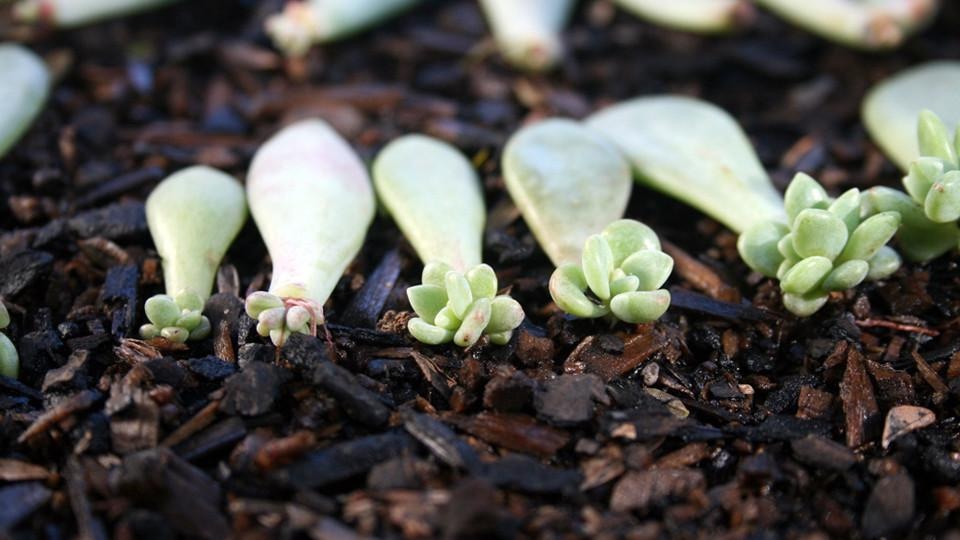How to Propagate Succulents from Cuttings and Offsets
One of the joys of growing succulents is how easy it is to multiply your collection. Many succulents can be propagated from a single leaf, stem cutting, or by separating natural offsets (sometimes called pups or chicks). With the right method and a little patience, you can turn one healthy plant into many.
Whether you're working with rosettes, trailing varieties, or clumping types, propagating succulents is a rewarding way to expand your indoor garden—or share with friends.
Propagation by Leaf Cuttings
Some succulents can regrow an entire plant from a single leaf. This method works best with thick-leaved varieties like:
-
Echeveria
-
Graptopetalum
-
Sedum (some varieties)
-
Crassula (Jade plant)
Steps for Leaf Propagation:
-
Choose a healthy leaf: Gently twist a plump, mature leaf from the main stem. It should come off cleanly with no part left behind.
-
Let it callous: Place the leaf on a dry surface out of direct sun for 2–4 days. This helps prevent rotting.
-
Place on soil: Set the calloused leaf on top of dry succulent or cactus mix. Don’t bury it.
-
Mist occasionally: After a few days, lightly mist every few days to keep the top of the soil slightly damp. Do not soak.
-
Wait for roots and baby plants: In a few weeks, roots and tiny rosettes will begin to emerge from the leaf base.
-
Remove the original leaf: Once the baby plant is established, the original leaf will shrivel. Remove it gently and pot up the new plant if needed.
Propagation by Stem Cuttings
This method works for many branching or trailing succulents such as:
-
Crassula ovata (Jade)
-
Aeonium
-
Senecio (like String of Pearls or String of Bananas)
-
Kalanchoe
Steps for Stem Propagation:
-
Cut a healthy stem: Use clean scissors or pruners to cut a 2–4 inch section from the tip of a healthy stem.
-
Remove lower leaves: Strip a few lower leaves to expose a bare stem for planting.
-
Let it callous: Allow the cutting to dry in a warm, shaded spot for several days.
-
Plant in soil: Insert the calloused end into well-draining soil. Keep upright if possible.
-
Water sparingly: Wait a few days, then begin watering lightly once the roots start to develop (usually within 2–3 weeks).
Propagation from Offsets (Pups or Chicks)
Many succulents grow new plants at their base, which can be gently removed and replanted. This works well for:
-
Hens-and-Chicks (Sempervivum and Echeveria)
-
Haworthia
-
Aloe
-
Agave
Steps for Dividing Offsets:
-
Wait for maturity: Allow the offset to reach about one-third the size of the mother plant.
-
Remove the plant from its pot: Gently loosen the soil to expose the roots.
-
Separate the offset: Use a clean, sharp knife or twist gently to detach the pup, making sure it has some roots attached.
-
Let it callous: Allow the cut end to dry for 1–2 days.
-
Plant in a small pot: Use dry succulent soil and avoid watering for a few days to let roots settle.
-
Resume normal care: After a week, water lightly and move to bright, indirect light.
Best Time to Propagate
Spring and early summer are ideal for succulent propagation, especially if your plants live outdoors or in sunny windows. Plants are more likely to root successfully when they’re actively growing.
Final Thoughts
Whether you're rooting a leaf, trimming a stem, or dividing offsets, propagating succulents is simple, fun, and incredibly satisfying. With a little time and the right conditions, you’ll have healthy new plants ready to pot up—or give away to a fellow plant lover.
Just remember: patience is part of the process. Succulents may take several weeks to root and grow—but the results are always worth the wait.
